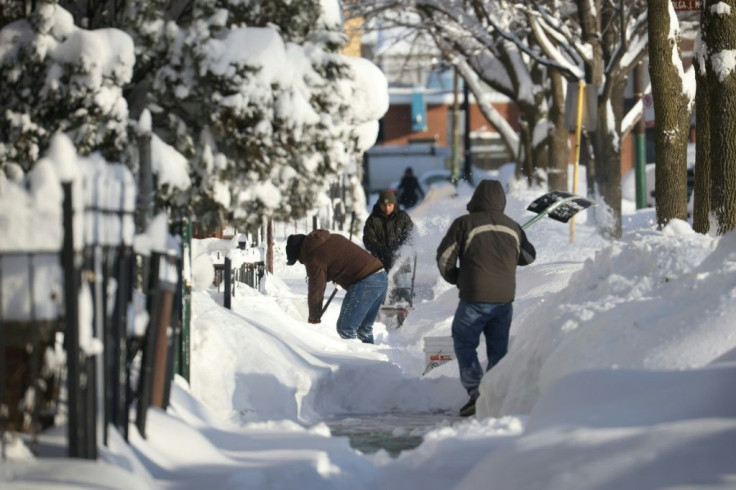Snow Thrower Recall 2021: Defective Snow Removal Equipment Poses 'Amputation Hazard'
KEY POINTS
- Toro recalls 6,700 units of snow throwers because of a possible "amputation hazard"
- It can cause serious injuries, including finger amputations
- Show thrower users are advised to follow safety measures while using the equipment
Toro is recalling its snow-removing equipment because of an "amputation hazard" as winter storms continue to sweep across the United States.
The company said the Toro Power Max 826 OHAE's auger can fail to "disengage when the control lever is released," thereby posing an injury risk. But no injuries related to the issue have been reported so far.
The Consumer Product Safety Commission (CPSC) has urged people to be careful while using snow throwers. "Injuries most frequently occur when consumers tried to clear the auger/collector or discharge chute with their hands," it said.
Customers should stop using the recalled product and contact an authorized dealer to repair it. The recall affects the 2021 model of the unit. Users of the product can check Toro's website to see whether the serial number of their unit is included in the recall.
It recalled 6,700 units of snow throwers and they were sold from November 2020 to January 2021.
Snow thrower safety
Just like snow blowers, snow throwers are machines that are used to remove snow but they are smaller in size, Prime Reviews explained. Although considered to be less powerful compared to snow blowers, snow throwers still pose some dangers. The CPSC warns about the risk of carbon monoxide poisoning from leaving the machine's engine running in an enclosed space.
It is important to observe proper safety measures when using snow throwers, especially at a time when parts of the country face severe winter weather.
Users should never place their hands in or close to the chute to remove a clog. Instead, they must stop the engine and use a long stick to remove the debris, the CPSC said.
It's also important to add gasoline to the machine outdoors before starting it. The gasoline can should be covered and kept away from items that may cause ignition.
Harvard Environmental Health, Safety & Emergency Management also reminds users to read the manual before using the equipment and to allow it to cool for a while before keeping it back in storage.

© Copyright IBTimes 2024. All rights reserved.






















